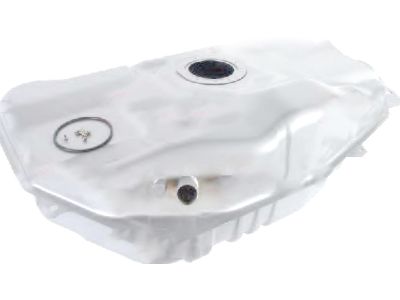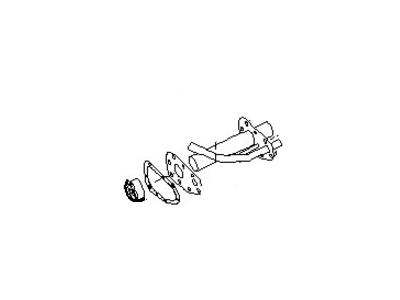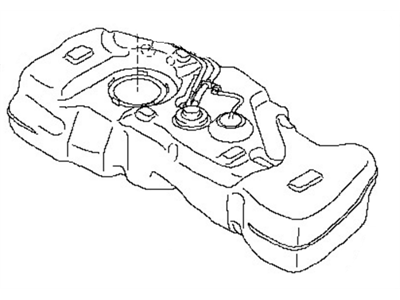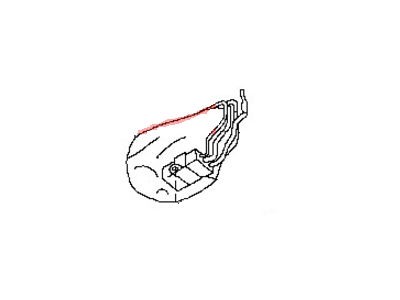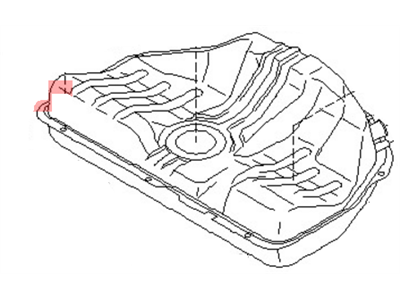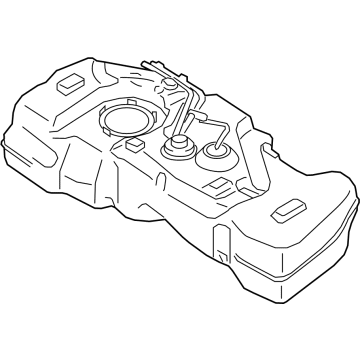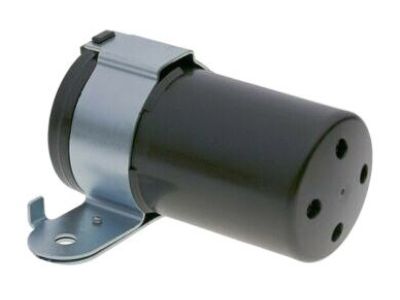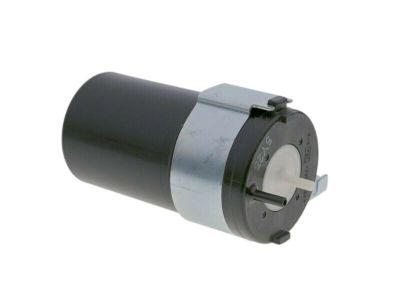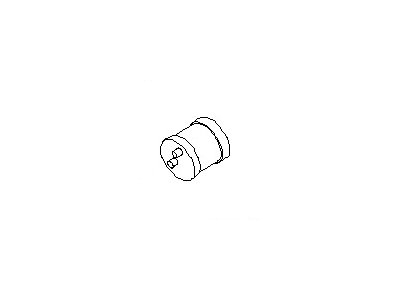×
- Hello
- Login or Register
- Quick Links
- Live Chat
- Track Order
- Parts Availability
- RMA
- Help Center
- Contact Us
- Shop for
- Nissan Parts
- Nissan Accessories

My Garage
My Account
Cart
Genuine Nissan Sentra Fuel Tank
Gas Tank- Select Vehicle by Model
- Select Vehicle by VIN
Select Vehicle by Model
orMake
Model
Year
Select Vehicle by VIN
For the most accurate results, select vehicle by your VIN (Vehicle Identification Number).
44 Fuel Tanks found

Nissan Sentra Fuel Tank Assembly
Part Number: 17202-5M000$463.91 MSRP: $614.28You Save: $150.37 (25%)Ships in 1-3 Business Days
Nissan Sentra Fuel Tank Assembly
Part Number: 17202-3SG0C$527.45 MSRP: $744.98You Save: $217.53 (30%)Ships in 1-3 Business DaysNissan Sentra Fuel Tank Assembly
Part Number: 17202-4AF0A$619.75 MSRP: $875.35You Save: $255.60 (30%)Ships in 1-3 Business DaysNissan Sentra Fuel Tank Assembly
Part Number: 17202-EM31A$427.40 MSRP: $603.67You Save: $176.27 (30%)Ships in 1-3 Business DaysNissan Sentra Fuel Tank Assembly
Part Number: 17202-ZT60A$701.14 MSRP: $990.32You Save: $289.18 (30%)Ships in 1-3 Business DaysNissan Sentra Fuel Tank Assembly
Part Number: 17202-1M200$359.70 MSRP: $554.24Limited AvailabilityYou Save: $194.54 (36%)Nissan Sentra Tank Assy-Fuel
Part Number: 17202-6LB0A$663.63 MSRP: $937.33You Save: $273.70 (30%)Ships in 1-3 Business DaysNissan Sentra Fuel Tank Assembly
Part Number: 17202-8U701$674.96 MSRP: $953.33You Save: $278.37 (30%)Ships in 1-3 Business DaysNissan Sentra Fuel Tank Assembly
Part Number: 17202-0M000$359.70 MSRP: $554.24Limited AvailabilityYou Save: $194.54 (36%)Nissan Sentra Fuel Tank Assembly
Part Number: 17202-4AF1A$527.45 MSRP: $744.98You Save: $217.53 (30%)Ships in 1-3 Business DaysNissan Sentra Fuel Tank Assembly
Part Number: 17202-69A00$276.18 MSRP: $425.55Limited AvailabilityYou Save: $149.37 (36%)Nissan Sentra Fuel Tank Assembly
Part Number: 17202-69A01$276.18 MSRP: $425.55Limited AvailabilityYou Save: $149.37 (36%)Nissan Sentra Fuel Tank Assembly
Part Number: 17202-04A11$294.58 MSRP: $453.89Limited AvailabilityYou Save: $159.31 (36%)Nissan Sentra Fuel Tank Assembly
Part Number: 17202-61A10$332.80 MSRP: $512.78Limited AvailabilityYou Save: $179.98 (36%)Nissan Sentra Fuel Tank Assembly
Part Number: 17202-F4300$359.70 MSRP: $554.24Limited AvailabilityYou Save: $194.54 (36%)Nissan Sentra Fuel Tank Assembly
Part Number: 17202-EM31B$527.45 MSRP: $744.98You Save: $217.53 (30%)Ships in 1-3 Business DaysNissan Sentra Fuel Tank Assembly
Part Number: 17202-4FU1A$566.68 MSRP: $800.40You Save: $233.72 (30%)Ships in 1-3 Business DaysNissan Sentra Fuel Tank Assembly
Part Number: 17202-8U700$661.72 MSRP: $934.63Limited AvailabilityYou Save: $272.91 (30%)Nissan Sentra Fuel Tank Assembly
Part Number: 17202-5UD0A$703.78 MSRP: $994.03You Save: $290.25 (30%)Ships in 1-3 Business Days
Nissan Sentra Tank Assembly Pressure
Part Number: 22370-8J000$30.50 MSRP: $42.05You Save: $11.55 (28%)
| Page 1 of 3 |Next >
1-20 of 44 Results
Nissan Sentra Fuel Tank
The Fuel Tank is contained in Nissan Sentra vehicles as a storage place for fuel and a home to the electric fuel pump and the fuel gauge sender. It has baffles to decrease fuel movement; is a component of the Evaporative Emission Control System; a fuel tank can be metal or plastic. Metal tanks are stamped and welded and plastic tanks are blow molded. Fuel tanks can succumb to corrosion, impacts and temperature variations and fluctuations. Formula cars and racing fuel cells are made in such a way to prevent puncturing and spilling fuel in the instance that it has an accident. Large fuel tanks built from military strength polymer can add up to 500 miles' range and can be configured in ways not achievable with steel tanks while being corrosion resistant.
If you need any OEM Nissan Sentra Fuel Tank, feel free to choose them out of our huge selection of genuine Nissan Sentra Fuel Tank. All our parts are offered at unbeatable prices and are supported by the manufacturer's warranty. In addition, we offer quick shipping to have your parts delivered to your door step in a matter of days.
Nissan Sentra Fuel Tank Parts Questions & Experts Answers
- Q: How to remove and install a fuel tank on Nissan Sentra?A:The following procedure is much easier to perform if the fuel tank is empty. Drain the fuel into an approved fuel container using a commercially available siphoning kit (NEVER start the siphoning action by mouth) or wait until the fuel tank is nearly empty, if possible. Remove the fuel tank filler cap to relieve fuel tank pressure. Relieve the fuel system pressure. Disconnect the cable from the negative terminal of the battery. Disconnect the lines and wiring from the Fuel Pump module at the top of the fuel tank. If desired, the fuel pump module can be removed at this time. Raise the vehicle and place it securely on jackstands. If there is still fuel in the tank, siphon it out from the fuel feed line. Remember - NEVER start the siphoning action by mouth! Remove the exhaust pipe. Disconnect the hoses and electrical connector from the fuel tank (Depress the tang and disconnect the electrical connector, then detach the fuel feed hose). Remove the center exhaust tube and exhaust heat shields. Disconnect the parking brake cables from their brackets. Move the cables aside and secure them in place with wire. Remove the fuel tank shield (if applicable). Loosen the fuel filler hose clamp and remove the fuel filler hose from the fuel tank. Disconnect the vent and EVAP hoses, located at the rear or side of the fuel tank. Support the fuel tank with a floor jack. Position a wood block between the jack head and the fuel tank to protect the tank. Remove the fuel tank strap bolts. Remove the tank from the vehicle. Installation is the reverse of removal. Reconnect the battery and perform the necessary re-learn procedures.
Related Nissan Sentra Parts
Browse by Year
2024 Fuel Tank 2023 Fuel Tank 2022 Fuel Tank 2021 Fuel Tank 2020 Fuel Tank 2019 Fuel Tank 2018 Fuel Tank 2017 Fuel Tank 2016 Fuel Tank 2015 Fuel Tank 2014 Fuel Tank 2013 Fuel Tank 2012 Fuel Tank 2011 Fuel Tank 2010 Fuel Tank 2009 Fuel Tank 2008 Fuel Tank 2007 Fuel Tank 2006 Fuel Tank 2005 Fuel Tank 2004 Fuel Tank 2003 Fuel Tank 2002 Fuel Tank 2001 Fuel Tank 2000 Fuel Tank 1999 Fuel Tank 1998 Fuel Tank 1997 Fuel Tank 1996 Fuel Tank 1995 Fuel Tank 1994 Fuel Tank 1993 Fuel Tank 1992 Fuel Tank 1991 Fuel Tank 1990 Fuel Tank 1989 Fuel Tank 1988 Fuel Tank 1987 Fuel Tank 1986 Fuel Tank 1985 Fuel Tank 1984 Fuel Tank 1983 Fuel Tank 1982 Fuel Tank
